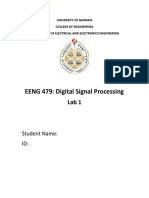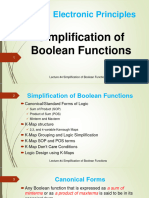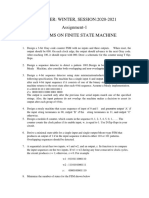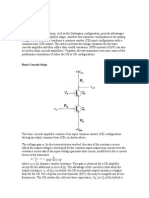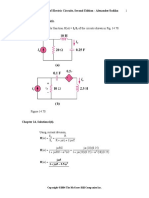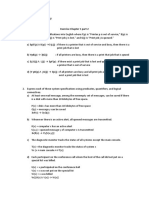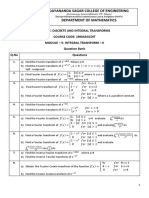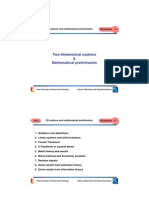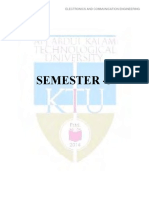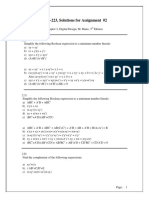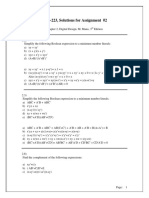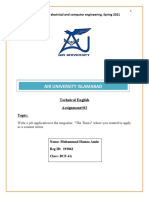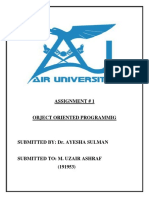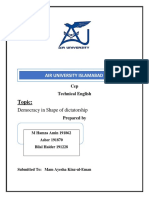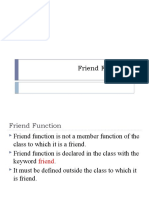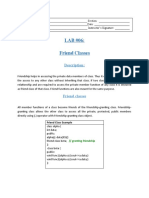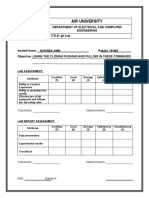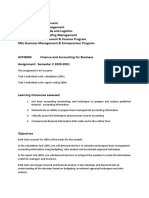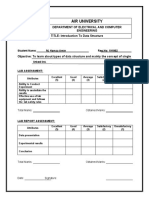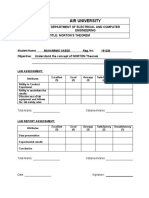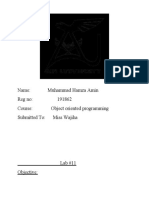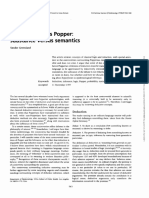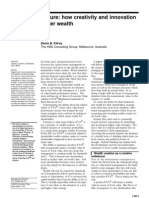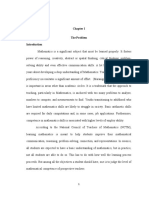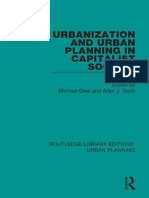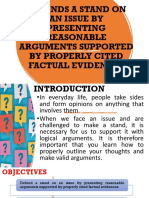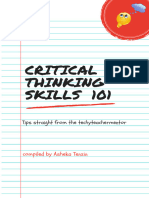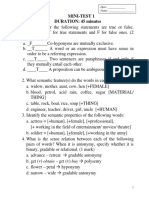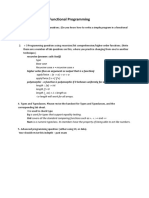ECE-223, Solutions for Assignment #2
Chapter 2, Digital Design, M. Mano, 3rd Edition
2.2)
Simplify the following Boolean expression to a minimum number literals:
a) xy + xy′
b) (x + y)(x + y′)
c) xyz + x′y + xyz′
d) (A+B)′(A′+B′)′
a) xy + xy′ = x ( y+y′)= x.1 = x
b) (x+y)(x+y′) = xx + xy′ + yx+yy′ = x + xy′ + xy + 0 = x (1+ y′ + y) = x.1= x
Also (x+y)(x+y′) =x+ yy′ = x + 0 = x
c) xyz + x′y + xyz′ = xy(z+z′) + x′y = xy +x′y = y(x+x′)=y
d) (A+B)′(A′+B′)′= (A′B′).(AB) = 0
2.3)
Simplify the following Boolean expression to a minimum number literals:
a) ABC + A′B + ABC′
b) x′yz + xz
c) (x+y)′(x′+y′)
d) xy + x(wz + wz′)
e) (BC′+A′D)(AB′+CD′)
a) ABC + A′B + ABC′ = AB(C+C′) + A′B = AB + A′B = B(A+A′) = B
b) x′yz + xz = z(x′y+x)= z(x′+x)(x+y) = z(x+y)
c) (x+y)′(x′+y′) = x′y′.(x′+y′) = x′y′+x′y′ = x′y′
d) xy + x(wz + wz′) = xy + xw(z+z′) = xy + xw = x(y+w)
e) (BC′+A′D)(AB′+CD′)= AB′BC′ + AB′A′D + CD′BC′ + CD′A′D = 0
2.6)
Find the complement of the following expressions:
a) xy′+x′y
b) ( AB′+C)D′+E
c) (x+y′+z)(x′+z′)(x+y)
Page: 1
�a) [xy′+x′y]′ = (xy′)′ + (x′y)′ = (x′+y).(x+y′) = xx′ + yy′
b) [(AB′+C)D′+E]′ = [(AB′+C)D′]′.E′ = [(AB′+C)′+D] . E′= [(A′+B).C′ +D].E′ =
= (A′+B+D).(C′+D).E′
c) [(x+y′+z)(x′+z′)(x+y)]′ = (x+y′+z)′+(x′+z′)′+(x+y)′= x′yz′ + xz + x′y′
2.7)
Given Boolean function F1 and F2.
a) Show that the Boolean function E = F1+F2 contains the sum of the minterms of F1 and
F2
b) Show that the Boolean function G = F1.F2 contains the sum of the minterms of F1 and
F2
F1= ∑ mi and F2= ∑ mj
a)
E = F1+ F2= ∑ mi + ∑ mj = ∑ (mi + mj)
b)
G = F1F2 = ∑ mi . ∑ mj
mi.mj = 0 if i ≠ j
mi.mj = 1 if i = j
Therefore G has only common minterms.
2.14)
Obtain the truth table of the following functions and express each function in sum of
minterms and product of maxterms:
a) (xy + z) ( y + xz)
b) (A′ + B) (B′+C)
c) y′z + wxy′ + wxz′ + w′x′z
a) (xy + z) ( y + xz) = xy + yz + xyz + xz =∑(3,5,6,7) = ∏ ( 0 ,1,2,4)
b) (A′ + B) (B′+C) = A′B′ + A′C + BC = ∑ (0,1,3,7) = ∏ ( 2,4,5,6)
c) y′z + wxy′ + wxz′ + w′x′z = ∑(1,3,5,9,12,13,14)= ∏ (0,2,4,6,7,8,10,11,15)
2-15)
Given the Boolean function
F= xy′z + x′y′z + w′xy + wx′y + wxy
a) Obtain the truth table of the function.
b) Draw the logic diagram using the original Boolean expression.
Page: 2
�c) Simplify the function to a minimim number of literals using Boolean algebra.
d) Obtain the truth table of the function from the simplified expression and show that it
is the same as the one in part (a)
e) Draw the logic diagram from the simplified expression and compare the total number
of gates with the diagram of part (b)
a) F(w,x,y,z) = ∑ ( 1,5,6,7,9,10,11,13,14,15)
b) F= xy′z + x′y′z + w′xy + wx′y + wxy
5 3-input AND gate; 5 3-input OR gate
c) F = y′z(x+x′) + xy(w′+w) + wy(x′+x) = y′z + xy + wy = y′z + y ( x + w)
d) F(w,x,y,z) = ∑ ( 1,5,6,7,9,10, 11,13,14,15)
e) y'
z
F
y
x
w
2.17)
Express the complement of the following function in sum of minterms:
a) F(A,B,C,D) = ∑(0,2,6,11,13,14)
b) F(x,y,z) = ∏(0,3,6,7)
a) F′(A,B,C,D) = ∑(1,3,4,5,7,8,9,10,12,15)
b) F′(x,y,z) = ∑(0,3,6,7)
2.18)
Convert the following to the other canonical form:
a) F(x,y,z) = ∑(1,3,7)
b) F(A,B,C,D) = ∏ (0,1,2,3,4,6,12)
a) F(x,y,z) = ∑(1,3,7) = ∏(0,2,4,5,6)
b) F(A,B,C,D) = ∏ (0,1,2,3,4,6,12) = ∑(5,7,8,9,10,11,13,14,15)
Page: 3
�2.22)
By substituting the Boolean expression equivalent of the binary operation as defined in
Table 2-8 ( Digilal Design, M. Mano, 3rd Edition,pp. 57) show the following:
a) The inhibition operation is neither commutative nor associative.
b) The exclusive-OR operation is commutative and associative.
a) x/y = xy′ ≠ y /x = x′y Not Commutative
(x/y)/z = xy′z′ ≠ x/(y/z) = x(yz′)′ = xy′ + xz Not Associative
b) x ⊕ y = xy′ + x′y = y ⊕ x = yx′ + y′x Commutative
(x ⊕ y) ⊕ z = ∑(1,24,7) = x ⊕ (y ⊕ z) Associative
Page: 4

